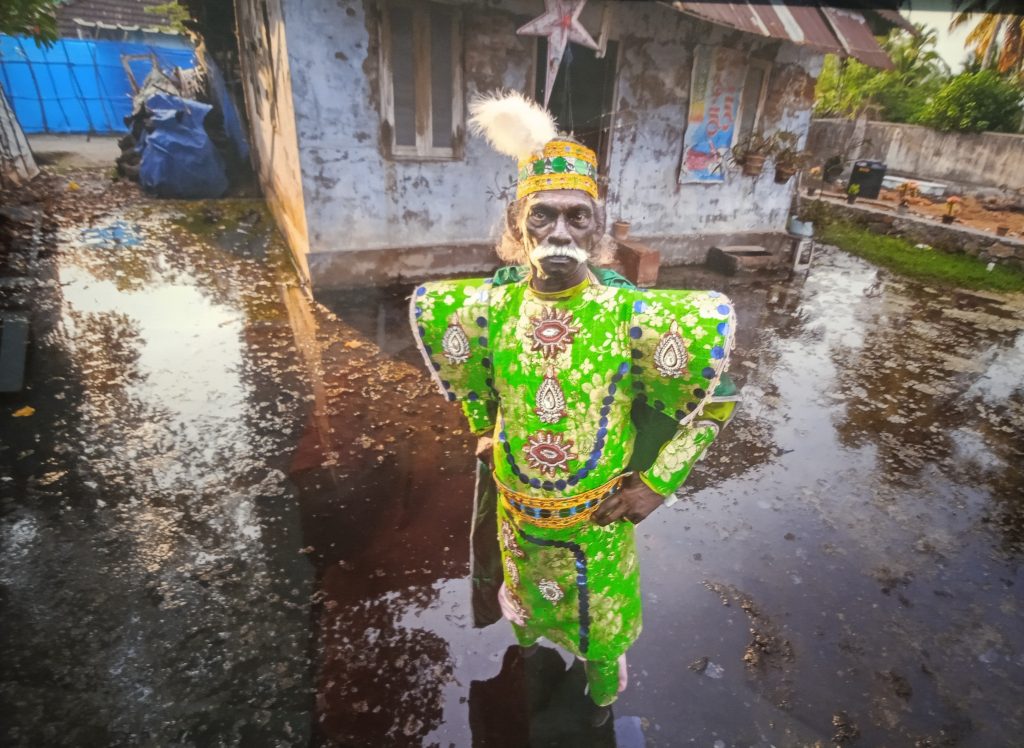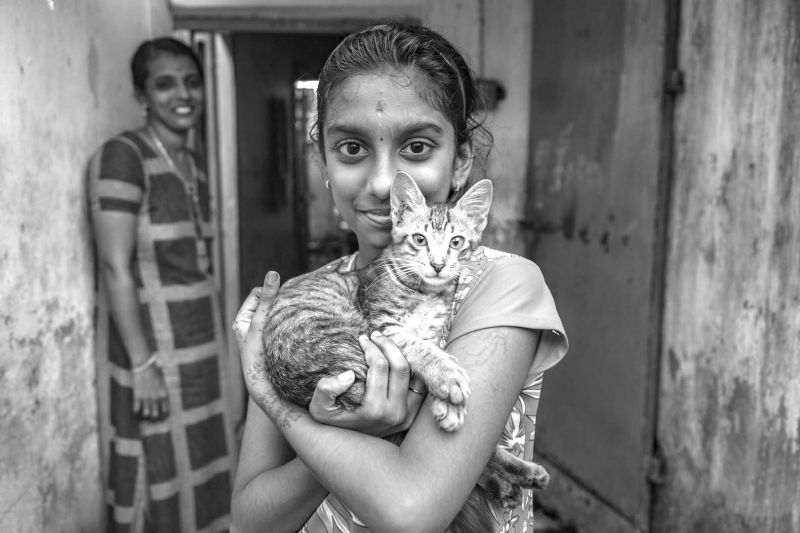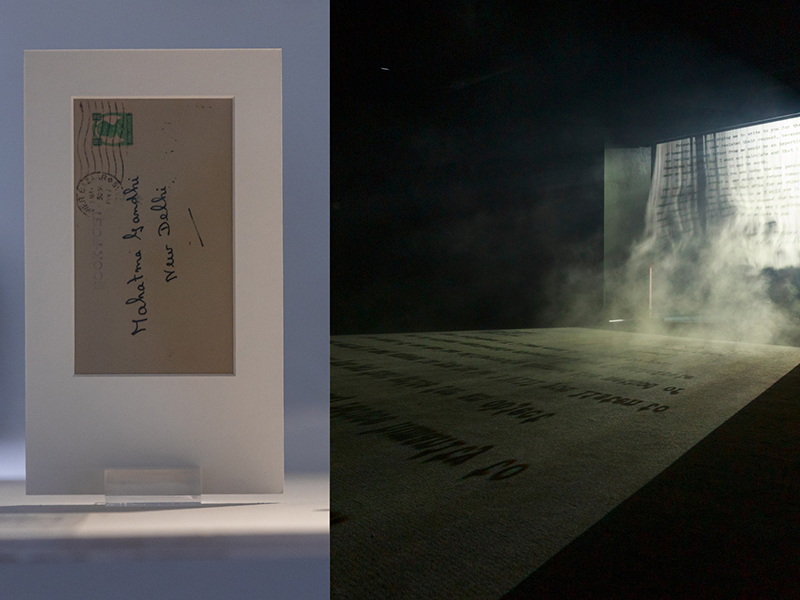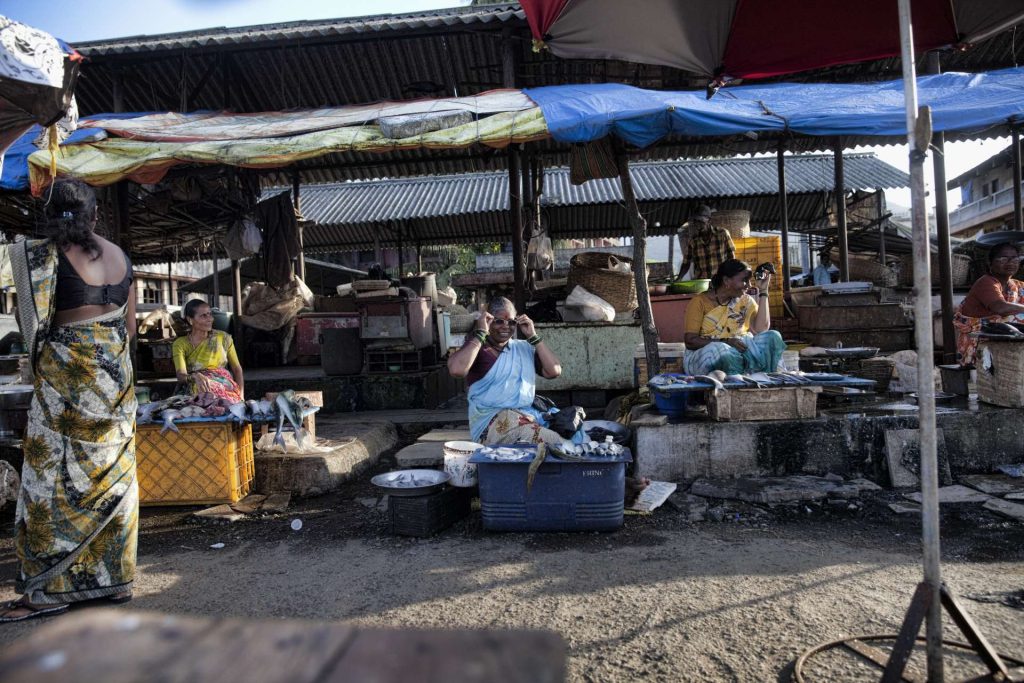Krispin Joseph PX
Photography is the best tool to capture stillness and ideal to document history as an image. Documentary photography is more into history and documents contemporary life for historical reference.
K R Sunil, Kochi-based documentary photographer and visual artist, exhibits his works related to Chavittu Nadakam in Sea, A Boiling
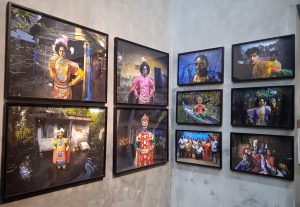
Courtesy- Krispin Joseph
Vessel, opened in Mattancheri Kashi Hallegua House entitled ‘Chavittu Nadakam: Story Tellers of the Seashore’ brings diverse ideas together. By training as a sculptor at fine arts college, photography shaped KR Sunil’s worldview, captured people’s lives, and wrote about them. He is based in Kodungallur, a space surrounded by fables and anecdotes of the historic port city of Muziris.
KR Sunil’s projects about the Chavittu Nadakam allude to transnational performance elements active in a community in the coastal route of Kerala, historically connecting colonialism and seafaring engagements through the Arabian seacoast. Sunil captures Chavittu Nadakam actors in front of their tiny homes with magnific and elegant performance outfits. In this project, Chavittu Nadakam transcends concepts into pictorial representations; lives matters of the performers are the under-weaving element of this visual dialogue. In some images, Chavittu Nadakam performers stand in front of their houses engulfed by water, which carries us to other regions of social realities communed to them and us.
They wear splendid and elegant dresses to perform this musical drama for the audience and themselves. They have become kings, ministers, and army men for drama, but in real life, they don’t even have a home; their homes are surrounded by high-tide water with rubbish when they are posing to artists. In glittering attire, artists demonstrate their ‘dramatic’ performativity, possession, sorrows, and glooms.
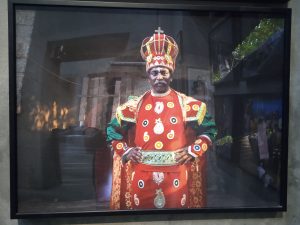
Courtesy- Krispin Joseph
The visual artist doesn’t intend to make a visual banquet for the audience; that’s why he doesn’t document the performers on the stage. They create a miraculous feast in a glittering medieval dress on the scene, and artists know which will be a visually appealing spectacle for the audience. But he brings us into the realities of the performers, what they are, and where they come to the stage, which makes it cathartic. Who are the real King, the queen, and the minister? They perform what they are not in their life in moments. That performance becomes a dream for them and, by them, a magical realistic life they follow; being a part of this performance gives them a beingness. In their vein of performative life, the audience can find the dramatic affluence of life that is filled with grief and suffering.
In ethnographic documentation, the artists understand the disparities between the stage and the performers’ real life. The artist should have followed the performative appeal of the Chavittu Nadakam for visually attractive picturesque. Still, he brought them and us into an invisible or subtly conveyed social reality that carries them and us to the real life of that people. The contrast that artists glimpsed in their life is echoed in this project; the way they represent themselves in this work is a visual treat between real and magical life.
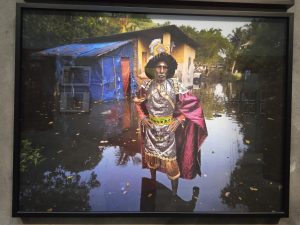
Courtesy- Krispin Joseph
Where do we stand between these people, their performance and life, magical realism and hardcore realism? These works convey intangible elements of the Chavittu Nadakam, history, and legacy.
Chavittu Nadakam originated with the interactions of Portuguese and coastal route people in the 16th century, which moulds two countries: performance, appearance in style and form, content and narration. An impact of unidentified indigenous musical-drama lineage is giving Chavittu Nadakam a transnational- cultural heritage: religious-cultural interaction of the coloniser facilitates coastal communities with operatic appearance.
Kaaralmaan Charitham (The chronicle of Emperor Charlemagne) is the most popular and staged Chavittu Nadakam performance. The foremost part of the Chavittu Nadakam plays connected to Portuguese, then colonialism, and the legacy of the Kingship and Queenship.
K R Sunil focuses on the everyday routine of the performers when they perform the life of the historical persons of Roman and Greek empires, Holy figures of Christianity, their body language and gestures. Artists visualising the ornamental life are only in the stage for the backward Dalit and fishermen community converted to Christianity; in real life, they struggle. But Chavittu Nadakam’s performance made them happy, gave them delight in life, and put them in a prominent position once a year or twice. They wait for the next performance season just after finishing one; sometimes, that is only hoped for them, only harbour for their despairful boats.
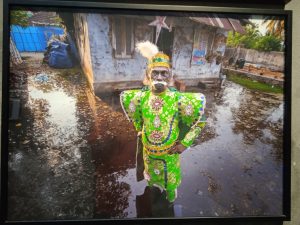
Courtesy- Krispin Joseph
Artists bring the most marginalised community from Chellanam and other coastal areas of Kochi, who struggle to make ends meet. They follow the Chavittu Nadakam tradition connected to the Tamil language and one of the master artists Chinnathampi Annavi. This lineage is the oldest tradition of mixing with other practices, including Tamil.
One thing is performative practice and people’s life, and the mixing of many traditions is the most significant scope of this project. Another one is climate change which affects not only these people, but artists use this project to bring that global issue in a visual platform. These people lived some days or months in a rehabilitation centre yearly during monsoon season. The coastal area where these people live is the most affected area of climatic change; the sea gradually erodes their homes and living space. They confront many things in their life, history gave them a performative layer, and now climatic disasters lead them to more marginalised locations.
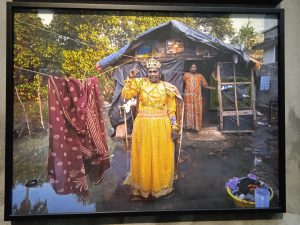
Courtesy- Krispin Joseph
No one can define what art is. Anything can become art, or everything has the potential to become a work of art. In this project, visual artist K R Sunil brings something from known areas of performative plateaus in an unfamiliar style and fashion that lead to thinking about many things.

Krispin Joseph PX, a poet and journalist, completed an MFA in art history and visual studies at the University of Hyderabad.

